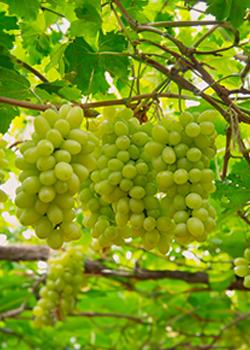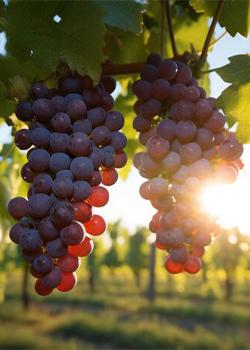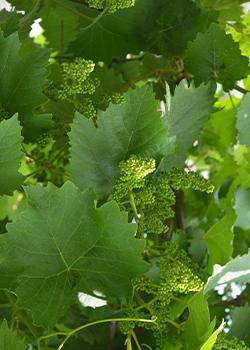Grapes
Grape (Vitis sp.), belonging to Family Vitaceae, is a commercially important fruit crop
The grapes contain approximately 20% sugar in easily digestible form, as well as being rich in calcium and phosphorus.
Also, it is mostly consumed as fresh fruit and dry fruits like raisins, etc.


The Role of Elements
Potassium (K)
- Promotes strong vine growth and increased productivity, leading to higher yields.
- Plays an important role in the production and transport of sugars in plants.
- Helps reduce sugars and convert them into starch.
- Improves the storage ability of clusters and their handling.
- Essential for the photosynthesis process.
- Increases plant resistance to certain diseases.
- Boosts fertility and berry size in clusters.
- Enhances vine tolerance to soil salinity.

Phosphorus (P)
- Stimulates the growth and distribution of lateral and fibrous roots.
- Increases the percentage of fertile buds and enhances flowering.
- Boosts the weight, size, and sugar content of berries.
- Promotes early fruit maturity.

Calcium (Ca)
- Increases to berry and clusters of fungal and bacterial diseases, especially powdery mildew.
- Minimize berry shatter of clusters.
- Enhances root growth and distribution, improving resistance to root rot.
- Strengthens vegetative growth and boosts yield.
- Promotes increased flowering, fertilization, fruit set, and berry growth.
- Improves berry hardness and extends the storage life of clusters and berries.
- Reduces the percentage of berry cracking.

Deficiency Symptoms
Potassium (K)
- In advanced stages, copper-brown spots appear on leaves, and leaf size decreases.
- Continuous shortage of potassium causes dries of leaves and wilting before time, especially in the middle.
- Reduction in berry size and dryness in the lower part of the cluster.
- Potassium shortage leads to decreased yield and poor quality.
- Low sugar content and coloring in berries.
- Reduces storage ability and handling of fruit.

Phosphorus (P)
- Low fertility of fruit buds, resulting in reduced yield.
- Deformation of grape clusters, and lack of export potential.
- General weakness in plants and poor root distribution.
- Reduces yield and lower fruit quality.

Calcium (Ca)
- Increases berry shatter percentage per cluster.
- Poor berry and cluster hardness, leading to reduced storage ability.
- Low plant resistance to fungal diseases.
- Increases berry cracking percentage in clusters.
- Dryness of shoot tips, branches, and roots.
- General weakness in growth and poor root distribution.

